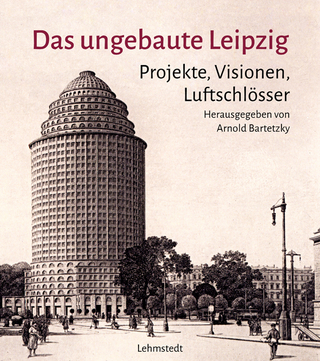
Thinking with Objects
Johns Hopkins University Press (Verlag)
978-0-8018-8427-6 (ISBN)
Domenico Bertoloni Meli is a professor of history and philosophy of science at Indiana University.
Acknowledgments
Introduction
1. Beyond Inertia: From Laws to Objects
2. Motion and Mechanics
3. The Role of Mathematics
4. Experience and Experiment
5. Practitioners, Sites, and Forms of Communication
6. Structure and Organization of the Present Work
1. Machines in the Field, in the Book, and in the Study
1.1. Between Classical Theory and Engineering Practice
1.2. Machines, Equilibrium, and Motion
1.3. The Balance of dal Monte and the Problem of Rigor
1.4. Pulleys and the Contingency of Matter
1.5. Rival Traditions on the Inclined Plane
2. Floating Bodies and a Mathematical Science of Motion
2.1. Some Features of Archimedes' Floating Bodies
2.2. Reading Floating Bodies
2.3. Benedetti against the Philosophers
2.4. Galileo's Early Speculations
2.5. Mazzoni, Stevin, and Galileo
3. The Formulation of New Mathematical Sciences
3.1. The Broadening of the Mechanical Tradition
3.2. Galileo at Padua and the Science of Motion
3.3. From Buoyancy to the Science of Waters
3.4. Motion between Heaven and Earth
3.5. The Science of the Resistance of Materials
3.6. The Science of Motion
4. Novel Reflections and Quantitative Experiments
4.1. Different Readings of Galileo
4.2. Mersenne's Harmonie and the Dialogo
4.3. Rethinking Galileo's Axiomatic Structure
4.4. Continuity and the Law of Fall
4.5. Trials with Projectiles, Pierced Cisterns, and Beams
4.6. The Experiments and Tables of Riccioli
5. The Motion and Collision of Particles
5.1. The Rise of the Mechanical Philosophy
5.2. Mechanics and the Mechanical Philosophy
5.3. Beeckman, Galileo, and Descartes
5.4. Motion and Its Laws
5.5. From the Balance to Impact: Beeckman, Marci, and Descartes
5.6. The Workings of the Cartesian Universe
Intermezzo: Generational and Institutional Changes
6. The Equilibrium and Motion of Liquids
6.1. A Characterization of a Research Tradition
6.2. Studies around the Time of the Cimento Academy
6.3. Pressure and Equilibrium in Pascal and Boyle
6.4. Studying the Motion of Waters North of the Alps
6.5. Guglielmini and the Bologna Scene
6.6. Experiments Combining Pressure and Speed
7. Projected, Oscillating, and Orbiting Bodies
7.1. The Tools of Investigation
7.2. The Analyses of Orbital Motion by Fabri and Borelli
7.3. Falling Bodies on a Moving Earth
7.4. Projectiles and Air Resistance
7.5. Huygens's Pendulum
7.6. English Approaches to Orbital Motion
8. Colliding Bodies, Springs, and Beams
8.1. The Emergence of Elasticity
8.2. Boyle and Elasticity
8.3. The Transformation of the Impact Rules
8.4. Springs between Technology and Cosmology
8.5. Bending and Breaking Beams
9. A New World-System
9.1. Teamwork and Anti-Cartesianism
9.2. Halley, Wren, Hooke, and Newton
9.3. The Principia's Structure and Conceptual Framework
9.4. The Role of Experiments
9.5. The Mathematical Principles of Natural Philosophy
9.6. A New World-System: Newton and Flamsteed
10. Causes, Conservation, and the New Mathematics
10.1. Mechanics at the Turn of the Century
10.2. The New Analysis
10.3. Conservation
10.4. Early Responses to Newton's Principia
10.5. The New Analysis and Newton's Principia
Conclusion: Mapping the Transformations of Mechanics
Notes
References
Index
| Erscheint lt. Verlag | 12.1.2007 |
|---|---|
| Zusatzinfo | 100 Line drawings, black and white |
| Verlagsort | Baltimore, MD |
| Sprache | englisch |
| Maße | 156 x 235 mm |
| Gewicht | 567 g |
| Themenwelt | Geisteswissenschaften ► Geschichte |
| Technik ► Maschinenbau | |
| ISBN-10 | 0-8018-8427-6 / 0801884276 |
| ISBN-13 | 978-0-8018-8427-6 / 9780801884276 |
| Zustand | Neuware |
| Haben Sie eine Frage zum Produkt? |
aus dem Bereich


